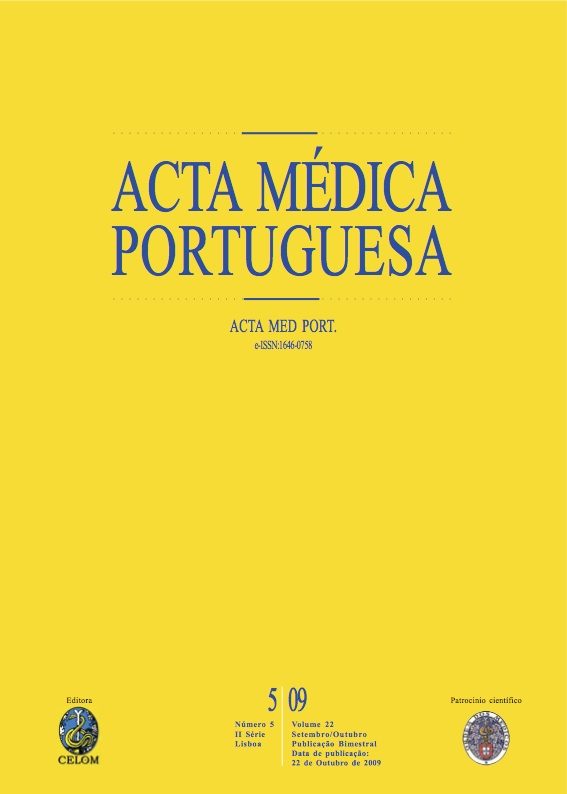Recomendações para o diagnóstico, tratamento e monitorização da leucemia mielóide crónica.
DOI:
https://doi.org/10.20344/amp.1720Resumo
Chronic Myeloid Leukemia (CML) is a clonal stem cell disease characterized by the expression of the fusion protein bcr-abl1, which has deregulated tirosine-kinase activity. Tyrosine kinase inhibitors (TKIs), and in particular imatinib, introduced fundamental changes in the treatment of CML, becoming, in most cases, the first-line treatment of choice in the chronic phase of this disease. Compared to other available therapies imatinib results in a marked increase in overall survival, tolerability and quality of life. The introduction of second generation TKI, with increased potency against bcr-abl1, expanded the number of therapeutic options for this disease and offers an alternative for patients resistant or intolerant to imatinib or who have progressed to the accelerated phase under this therapy. In order to achieve optimal outcomes, TKI therapy must be managed rigorously, requiring a careful monitoring of treatment response in pre-established time periods, thus permitting disease evaluation and safe decision of the most adequate option. Despite the definition of the criteria for imatinib treatment response, the therapeutic strategies to adopt according to the responses obtained are less clear. The objective of this paper is to review the criteria for CML diagnosis, treatment and monitoring, with recommendations as to the most adequate therapeutic choice according to the response to TKI therapy. The paper also focuses the current lines of investigation and debate areas that in the short term can significantly change the therapeutic scenario in this disease. These recommendations, supported by published scientific evidence and by the clinical practice of the expert panel involved in their elaboration, may constitute an important instrument for a better understanding and standardisation of the treatment and monitoring of CML in Portugal.Downloads
Downloads
Como Citar
Edição
Secção
Licença
Todos os artigos publicados na AMP são de acesso aberto e cumprem os requisitos das agências de financiamento ou instituições académicas. Relativamente à utilização por terceiros a AMP rege-se pelos termos da licença Creative Commons ‘Atribuição – Uso Não-Comercial – (CC-BY-NC)’.
É da responsabilidade do autor obter permissão para reproduzir figuras, tabelas, etc., de outras publicações. Após a aceitação de um artigo, os autores serão convidados a preencher uma “Declaração de Responsabilidade Autoral e Partilha de Direitos de Autor “(http://www.actamedicaportuguesa.com/info/AMP-NormasPublicacao.pdf) e a “Declaração de Potenciais Conflitos de Interesse” (http://www.icmje.org/conflicts-of-interest) do ICMJE. Será enviado um e-mail ao autor correspondente, confirmando a receção do manuscrito.
Após a publicação, os autores ficam autorizados a disponibilizar os seus artigos em repositórios das suas instituições de origem, desde que mencionem sempre onde foram publicados e de acordo com a licença Creative Commons









